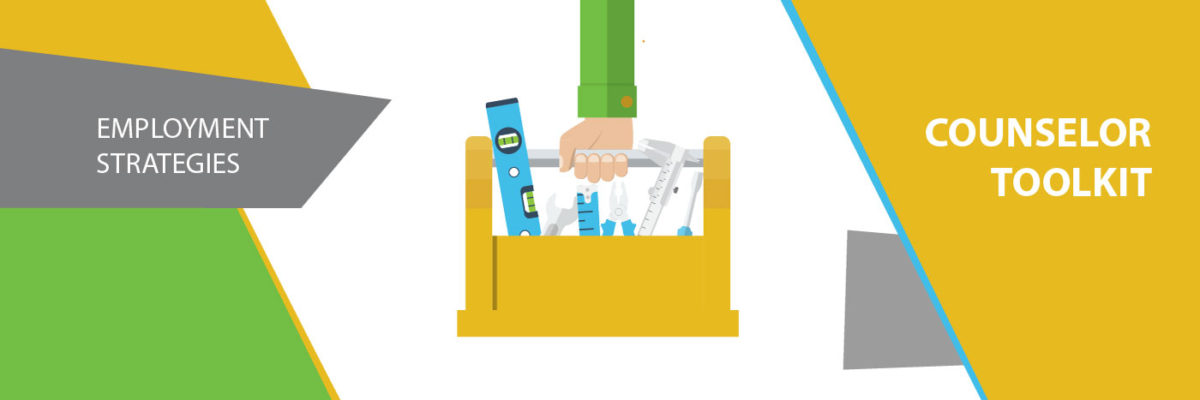This toolkit was developed specifically for VR Counselors working to improve employment and quality of employment outcomes for people with disabilities. It contains insights and instruction from the cumulative experience of VR service providers, community partners, rehabilitation researchers, and families and individuals with disabilities. It provides screening tools for counselors and gives instruction on the use of 7 evidence-based practices, including:
Why is it Needed?
Evidence-based practice has been gaining acceptance as a useful approach for increasing consumer involvement, controlling costs, and improving quality and accountability of healthcare and rehabilitation service delivery. It ensures that people with disabilities receive the most effective services and promotes ethical practice by better protecting consumers from harmful services, improving the efficient use of resources, and allowing people with disabilities the opportunity to exercise self-determination and informed choice.
How Does it Work?
A five-level framework gives counselors a way to evaluate practices based on the strength of evidence for their effective use in VR service delivery. There are four steps to integrating evidence-based practice into vocational rehabilitation:
Tips for Success
It’s important to select from the highest level of research design available when making evidence-based decisions. Acceptable evidence of effective interventions may be scarce; it may be necessary to evaluate information on a continuum of innovative practices ranging from emerging to promising.
References
Chan, F., Chronister, J., & da Silva Cardoso, E. (2009). An introduction to evidence-based practice approach to psychosocial interventions for people with chronic illness and disability. In F. Chan, E. da Silva Cardoso, & J.A. Chronister (2009), Understanding psychosocial adjustment to chronic illness and disability: A handbook for evidence-based practitioners in rehabilitation (pp. 3-16). New York: Springer.
Chan, F., Sung, C., Muller, V., Wang, C. C., Fujikawa, M., & Anderson, C. A. (2011). Evidence-based practice and research utilization. In Maki, D. R., & Tarvydas, V. M. (2011). The professional practice of rehabilitation counseling (Pp. 391-412). Springer Publishing Company.

Want to know more about how this employment strategy can be incorporated into your work? Check out these resources:

Featured Training
Watch webcasts to gain valuable information that will help improve employment outcomes and quality of employment for people you serve.
- Constructive Discourse: How to Have Tough Yet Safe Conversations
- Introduction to Implicit Bias
- Client Engagement in a Virtual Environment
- Evaluating Career Self-Efficacy: Research Findings
- Social- Cognitive Career Theory: Research Findings
- Motivational Interviewing in Vocational Rehabilitation: Foundations and Fundamentals
- Motivational Interviewing in Vocational Rehabilitation: Theory to Practice
- Building Relationships with Employers
- Innovative Job Placement Strategies

Selected Tools and Resources
These tools and resources offer information to support your practice.

Best Practices/Research
Project E3’s research summaries provide an “At-a-Glance” overview of the latest research findings, as well as recommendations for best practices and how to incorporate them in your work.
- VR Agency Operations and Services that Lead to Employment
- Understanding the Influences of Race, Disability, and Poverty on Employment
- Is Motivational Interviewing a Part of Your Rehabilitation Counseling Practice?
- SSDI and SSI Beneficiaries with Mental Illness Benefit from Evidence-Based Supported Employment
- Criminal Histories and RSA-911 Data: The Effect on Employment Outcomes for People of Color Receiving VR Services
- Raising Expectations for U.S. Youth with Disabilities: Federal Disability Policy Advances Integrated Employment

Strategy Use in Targeted Communities
Several Project E3 Communities identified Evidence-Based Practices as a strategy to improve employment outcomes for their most underserved populations. They include:

